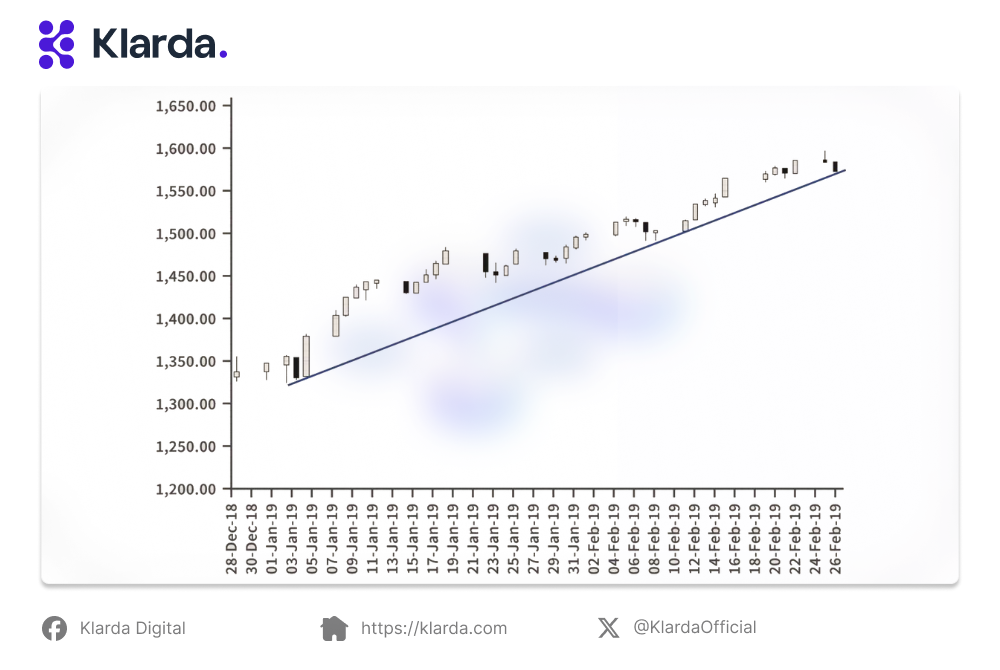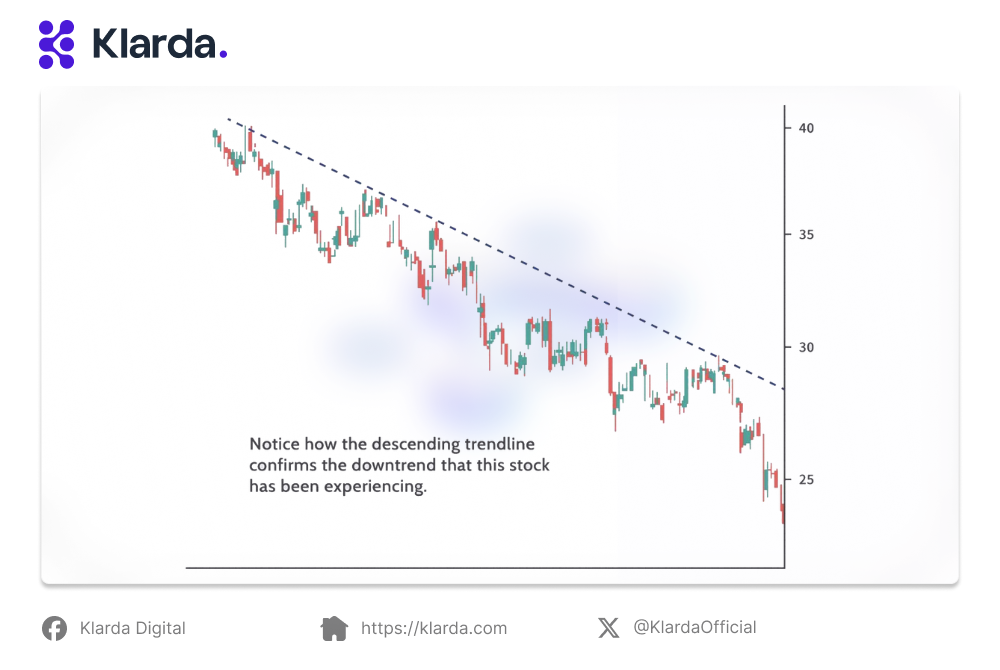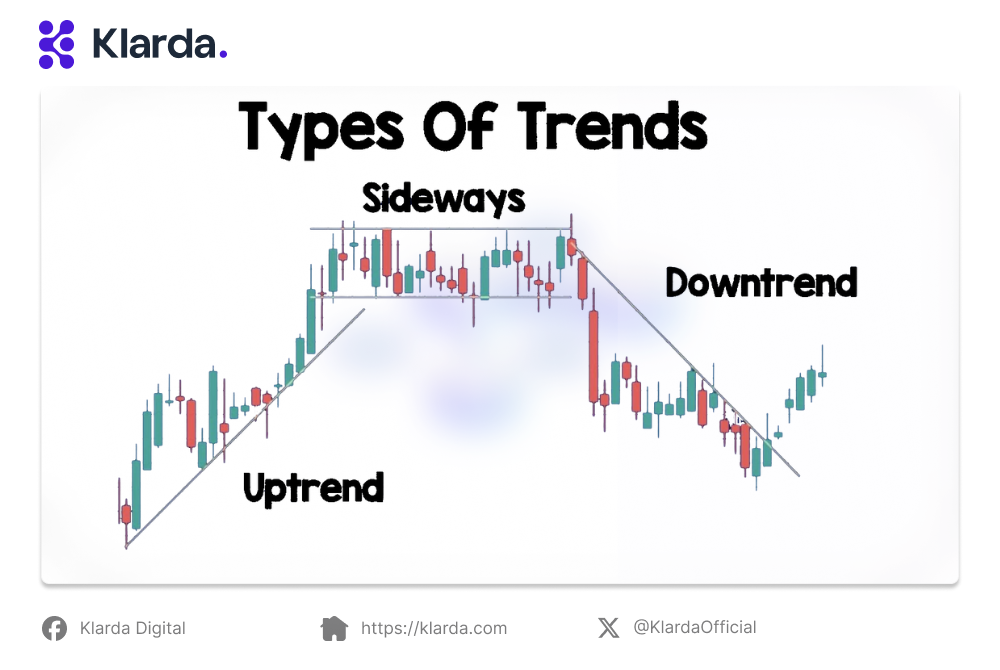Trend Line
What is Trend Line? The Trend Line has served as a fundamental element of technical analysis and assists investors in understanding market shifts.
What is Trend Line? In the ever-evolving world of finance and investment, understanding market trends is pivotal for success. One powerful tool that aids investors in deciphering market movements is the Trend Line. As a dynamic indicator, the Trend Line has been a cornerstone of technical analysis for decades. In this article, we will delve into types of Trend Lines and highlight examples to illustrate their significance in shaping investment strategies.

KEY TAKEAWAYS
- A Trend Line is a graphical representation of the general direction of a market's price movement.
- Trend Lines possess distinctive features that make them invaluable tools for technical analysis.
- There are various types of Trend Line used in technical analysis, each serving a specific purpose. Common types include support lines, resistance lines, and channels.
- Technical analysts use trendlines as a tool to anticipate the trajectory of a stock or other financial instrument.
WHAT ARE TREND LINE?
Historically, Charles Dow, one of the founding figures of technical analysis, introduced the idea of trends and their identification in the late 19th century. Over time, technical analysts have refined and expanded upon Dow's theories, incorporating Trend Lines as a key element in understanding market behavior.
The concept of a Trend Line can be traced back to the early days of technical analysis. A Trend Line is a graphical representation of the general direction of a market's price movement. It serves as a visual tool that aids analysts and traders in identifying the overall trend of an asset, be it bullish (upward), bearish (downward), or sideways (horizontal).
WHAT TREND LINE TELL?
Understanding what a Trend Line reveals is crucial for investors seeking to make informed decisions. Trend Lines possess distinctive features that make them invaluable tools for technical analysis.
Features of Trend Lines:
Trend Lines are typically drawn by connecting two or more significant price points on a Trend Line chart. They help visualize the overall direction and momentum of a market. A Trend Line is considered valid when it touches multiple points, indicating a stronger and more reliable trend.
Benefits of Trend Lines:
Trend Lines offer several advantages for traders and investors. They provide a clear visual representation of market trends, aiding in decision-making processes. Additionally, Trend Lines help identify potential reversal points or trend continuation, allowing investors to enter or exit positions strategically.

Trend Lines provide a clear visual representation of market trends
DRAWING YOUR OWN TREND LINE
So, how to draw Trend Line in candlestick chart? Drawing a Trend Line involves identifying significant highs and lows in a price chart. For an upward Trend Line, connect two or more consecutive lows, and for a downward Trend Line, connect two or more consecutive highs. This simple yet powerful technique provides a visual representation of the prevailing trend.

Drawing a Trend Line involves identifying significant highs and lows in a price chart
How to Calculate Trend Lines:
Here is a step-by-step guide on how to calculate Trend Line:
Identify Significant Points:
- For an upward Trend Line: Look for consecutive lows in the price chart.
- For a downward Trend Line: Identify consecutive highs.
Draw the Line:
- For an upward Trend Line: Connect two or more consecutive lows by drawing a straight line.
- For a downward Trend Line: Connect two or more consecutive highs.
The more points the line touches, the more reliable it is considered. A Trend Line is more valid if it touches multiple lows or highs, indicating a stronger trend.
To draw an accurate Trend Line, use a ruler if drawing manually, or utilize charting software if working digitally. Most trading platforms offer tools for drawing Trend Lines.
Depending on your Trend Line strategy, consider drawing Trend Lines on different timeframes
Besides Trend Line indicator, you should onsider using additional technical indicators, such as moving averages or momentum oscillators, to confirm the signals provided by the Trend Line.
LIMITATIONS OF TREND LINE
While Trend Lines are valuable tools in technical analysis, helping traders and analysts identify trends and potential reversals, they come with certain limitations. Here are some of the key limitations of Trend Lines:
- Sensitivity to Data Points: Trend Lines can be sensitive to the inclusion or exclusion of specific data points. A small change in the data set can result in a significant alteration of the Trend Line, impacting its reliability.
- Backfitting Issues: Trend Lines are often drawn retrospectively, meaning they are applied to historical data. While they may accurately represent past trends, they may not necessarily predict future movements, and relying solely on historical trends can be misleading.
- Inability to Capture Rapid Changes: Trend Lines may struggle to capture rapid and unexpected price movements, especially in fast-paced markets. Sudden market shocks or news events can lead to price changes that Trend Lines may not reflect in a timely manner.
- False Breakouts: Trend Lines can sometimes give false signals, indicating a breakout or reversal that doesn't actually occur. Traders need to be cautious and confirm Trend Line signals with other indicators or analysis methods.
TYPES OF TREND LINE
The various types of Trend Lines include:
- Linear Trend Line: Useful for straightforward linear datasets, this Trend Line indicates a consistent rise or fall in prices.
- Polynomial Trend Line: Employed for curved datasets, the polynomial Trend Line is applied when there are fluctuations in the data, such as analyzing profits and losses over extensive datasets.
- Exponential Trend Line: This type is suitable for datasets exhibiting rapidly increasing or decreasing values. However, it is not applicable when dealing with datasets containing zero or negative values.
- Moving Average Trend Line: Smooths out the price fluctuations of a financial asset, providing a clear representation of the trend. It involves averaging a specific number of data points and using the average value as a point in the Trend Line pattern.
- Logarithmic Trend Line: Also known as the best-fit curved line, it proves beneficial for traders when there is a swift surge or drop in the rate of price fluctuation before stabilizing.

There are various types of Trend Lines used in technical analysis, each serving a specific purpose
FAQS
How Are Stock Trendlines Employed?
Technical analysts use trendlines as a tool to anticipate the trajectory of a stock or other financial instrument. By obtaining a more distinct understanding of potential trends, analysts are better equipped to make informed choices regarding stock transactions.
Who Utilizes Trendlines?
While technical financial analysts are commonly linked with the use of trendlines, any investor aiming to acquire deeper insights into the movement of a stock, commodity, currency, or alternative investment can benefit from employing trendlines.
Hope this information answers your question “what is Trend Line” and helps you understand and utilize Trend Lines in the financial markets. The historical significance of these lines, coupled with their features, calculation methods, and benefits, positions them as indispensable tools for technical analysts. Investors can gain valuable insights into market trends and make informed decisions.
Updated 7 months ago